6 Easy Steps to Write Test Summary Report (TSR) or Test Closure Report – Free Sample TSR to download
In this article, we will learn what is Test Summary Report? Who prepares it? when is it prepared? Who are the stakeholders? What are the points to include in TSR with an example?
Test Summary Report is also called Test Closure Report or Test Completion Report.
What is Test Summary Report (TSR) or Test Closure/Completion Report?
As the name suggests it is a summary of your testing phase. The document provides a snapshot of testing efforts so far.
Who prepares it?
Mostly Test Leader or Test Manager prepares TSR.
When is it prepared?
Generally, Test Summary Report (TSR) is prepared when testing is completed for the Project. But again it depends on the company or client when they want to view the consolidated testing results so far. So in case of big projects, it can be published at the end of each testing cycle. In case of an agile project, TSR is published at the end of each Sprint.
For whom and why?
TSR is sent to the Client or higher management team to review the testing efforts by the testing team against the Test Plan.
(Here are the easy steps to write Effective Test Plan and Sample Test Plan to download )
Also, it makes it easy to make a decision if the project can go live.
Now the main part. What are the contents of TSR? Actual TSR contents may vary somewhat from company to company or project to project. But below basic sections are common everywhere.
Given is the snapshot of Index of Test Summary Report (TSR)
Let us take an example of “Online Flight Booking Application” and discuss TSR points in detail one by one:
1. DOCUMENT CONTROLS :
1.1 Revision History :
This section will show the revision history of Test Summary Report (TSR) i.e when it was prepared when it was updated, what was updated.
1.2 Distribution List and Document Review:
This will show a detailed list of resources involved in a testing phase, their roles.
Also, who reviewed this document, his role, and date.
2. INTRODUCTION :
2.1 Project Description :
This section provides an overview of the application that is being tested. i.e what it does, why it is developed? who is the intended customer of this application etc…
2.2 Objective :
It gives the purpose of this TSR
For Example:
<To show the status of test and quality targets at the completion of Sprint 1
To provide stakeholders with risk assessment data, which supports the decision to proceed with the release of the tested version of the script. >
3. TEST SCOPE:
3.1. In Scope :
This section gives which Modules or Functionalities are tested. Here you can insert Requirement Traceability Matrix (TSR) for more details.
3.2 Out Of Scope :
This section mentions what is not covered for testing or not tested and why
For Example: < International Flight Booking was not tested, as it’s still in development phase >
3.3 Additional Functionalities or Features Tested :
List any additional functions that were tested that were not originally in the plan to be tested, and why.
For Example :
- Verifies Hard copy of printed tickets also verified just to check the look of the ticket
- DB validation –Tested data in the database by performing Quarries and compared data against application
4. TEST RESULTS
4.1 Test Execution Details :
This gives a summary of your Testing Cycles / Phases / Sprint’s timelines and status
4.2 Any variance to the original test Plan :
Here you can mention if any Test Cycle was delayed Or any Test Cycle completed before time and Why?
For Example:
Cycle 1 was delayed by 2 days i.e on 27 Feb instead of 25 Feb – As it was not given for testing on time. Was supposed to get on 9th Feb, but received on 11th
5. QUALITY OF SOFTWARE :
5.1 Test Coverage and Results:
In this section, you need to summarize the Test Results of all type of testing you did. i.e Manual Testing, Automation Testing, Sanity Testing, Performance Testing etc.
You can also insert a detailed Execution Report for reference.
The tabular presentation will be easy to summarize and understand.
For Example:
Snapshot of Manual Test Result
Snapshot of Automation Test Results
5.2 Defect Matrix – By Status
In this section, you need to categorize the defects according to their status. You can also insert a detailed Defect Report for reference.
(Here are the Tips to draft Effective Defect Status Report – Sample Defect Status Report in Excel to download )
The tabular presentation as we as Graphical representation will be easy to summarize and understand.
For Example:
5.3 Defect Matrix – By Priority / Type
In this section, you need to categorize the defects according to their Severity.
Tabular presentation as we as Graphical representation will be easy to summarize and understand.
For Example:
5.4 Outstanding Issues:
This Section talks about any open defect and why it is still open or not fixed.
Also if the defect is deferred, give the details and when it is planned.
For Example:
The following 2 defects are deferred in Release 1.1.1 Mini Release and are outstanding issues for now:
Defect# 003 – Application allows a user to update the Spend Information section without approving the Funding Request or updating the fund request with pending, declined, or canceled status.
Defect# 014 – Application allows a user to save the form without entering the required fields.
5.5 Exit Criteria:
This section gives the conditions that were fulfilled so as to stop testing.
6. KNOWLEDGE MANAGEMENT:
6.1 Casual Analysis and Resolution :
Here needs to mention anything that was casually found during execution and needed special attention to get it resolved.
For Example:
Few defects have repeatedly occurred for several Cycles:
Resolution: Resource allocated for tracking repeated defects and sent notes to the development team.
6.2 Lessons Learned:
In this section, you need to mention whatever special knowledge or lessons you gained from this Application or testing process that needs to be shared with the team.
For Example:
6.3 Best Practices Adopted / New Improvements Implemented :
Here you can highlight QA Teams’ extra efforts to achieve the quality of an application.
For Example:
- QA Team performed Peer review of Test Cases for each Sprint which helps in better test coverage.
- QA team involved the Development team to provide review comments on test cases.
- QA team member is attending daily development scrum calls for seeking clarifications & inputs.
Please download Free Test Summary Report Template from here:

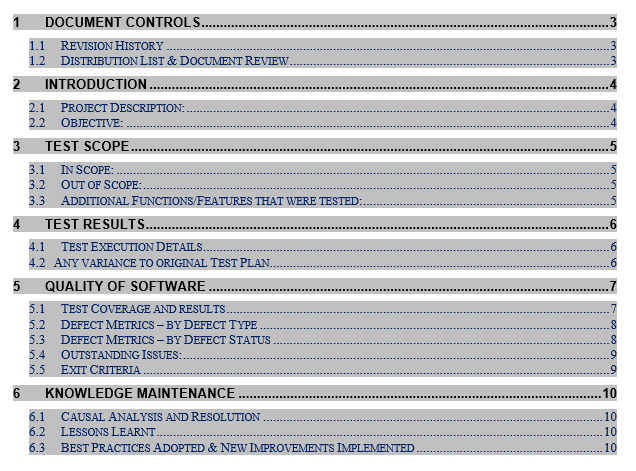
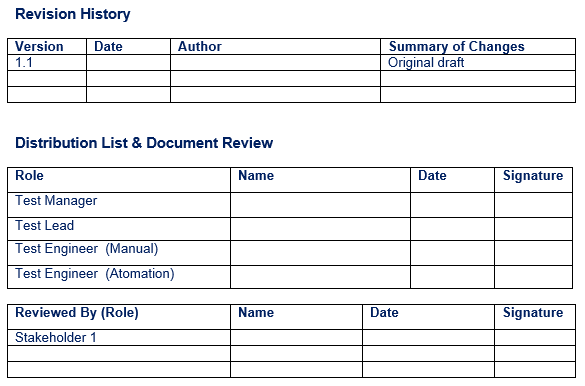
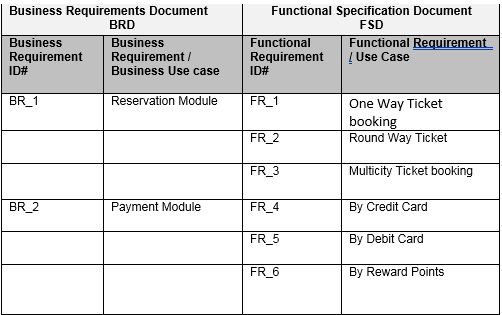




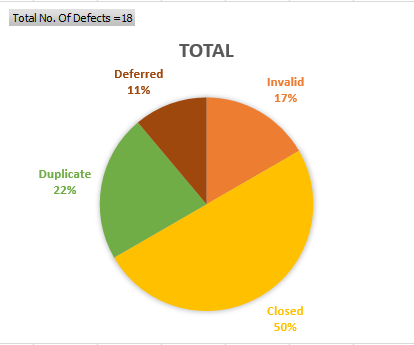

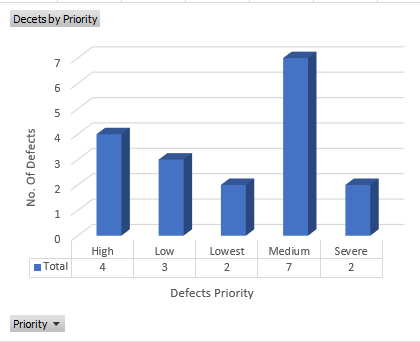


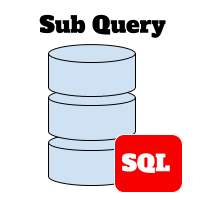
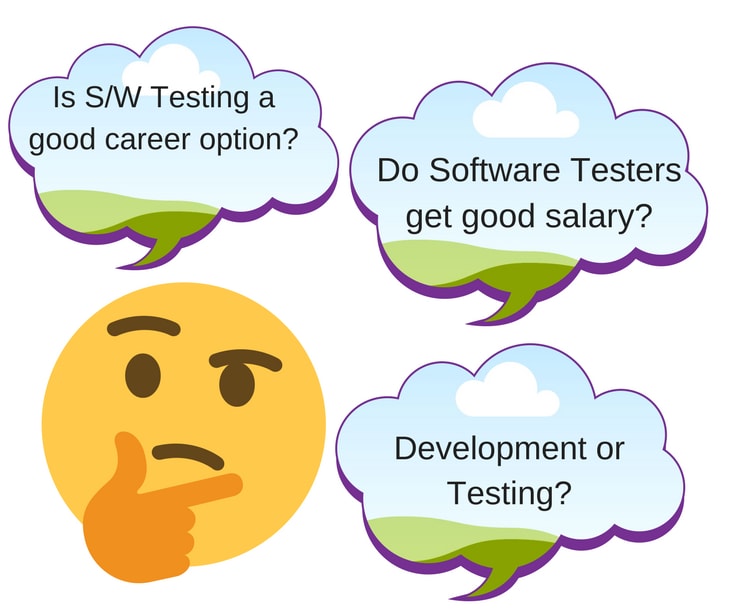

Thanks for uploading informative.
Thanks Praneeth, Glad you found this useful !
Very informative